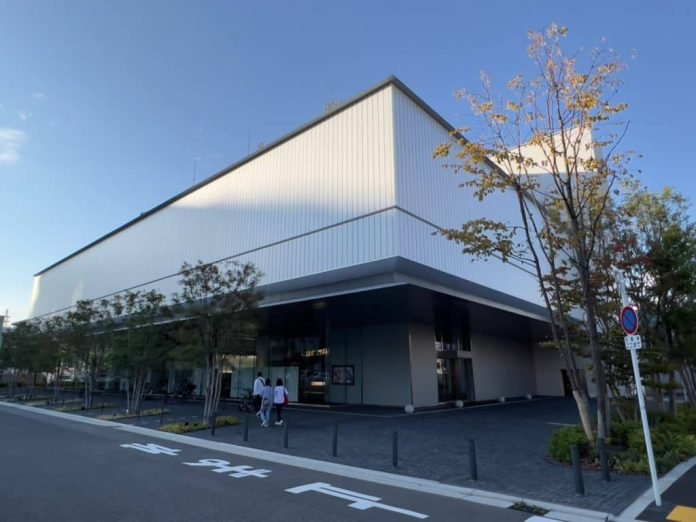
Table of Contents
Introduction

Originally known as the The Bicycle Museum Cycle Center, the museum was founded in 1992 as the first museum to promote bicycle culture in Japan and located in Daisen Park near Mozu Station on the JR Line. In 2022 The museum moved its collection to a new building in Minamikoyocho with 3.5 times the floor space and reopened as Shimano Museum.
Note: Visitors to the old location in Daisen Park can still ride replicas of some of the rare classic bicycles from the museums vast collection four times a month on weekends and holidays in an area known as Bicycle Plaza (Jitensha Hiroba in Japanese). Admission is ¥100/¥200. Click here to see the schedule.

Sakai City and Bicycles
Sakai is famous for ancient kofun burial mounds in the Mozu area created in the fifth century that are included on Unesco’s World Heritage list. In order to create tools to move massive amounts of soil, skilled iron workers from China and other parts of Japan moved to the area and developed advanced metal working techniques.
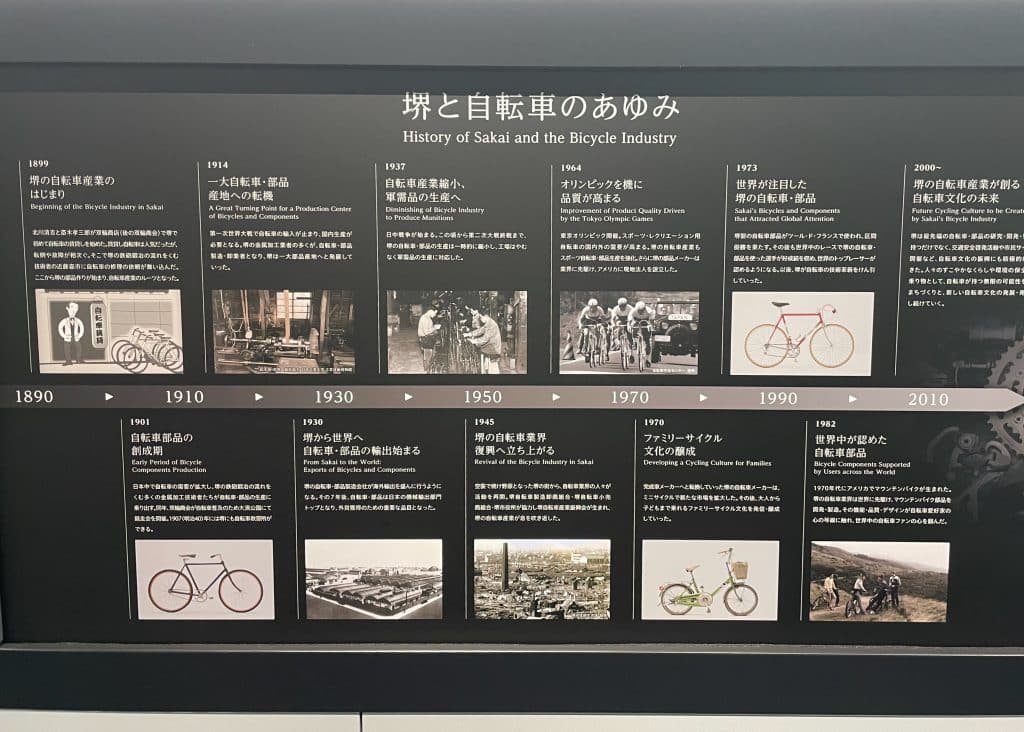
Centuries later, the metal foraging skills developed by generations craftsmen were used by gunsmiths, creating a flourishing firearms industry in Sakai. However, sales dried up after the central government took over the production of firearms in the early Meiji Period and metal workers lost their jobs. Many of these workers used their skills to forge knives, while others repaired imported bicycles or produced bicycle components.
The advent of World War I brought imported bicycle imports to a halt, creating a need for domestically produced bicycles. With its long history of skilled iron workers, Sakai soon became the center of bicycle production in Japan.
Shimano Inc
Shimano Inc was founded in Sakai 1921 by Shozaburo Shimano as Shimano Iron Works. The company started out small selling bicycle parts such as gears and derailluers, but today Shimano is a multinational manufacturing company whose sales constitute approximately 70%-80 of the global bicycle component market. Shimano, which also manufactures fishing tackle and rowing equipment, have manufacturing plants in China, Malaysia and Singapore.
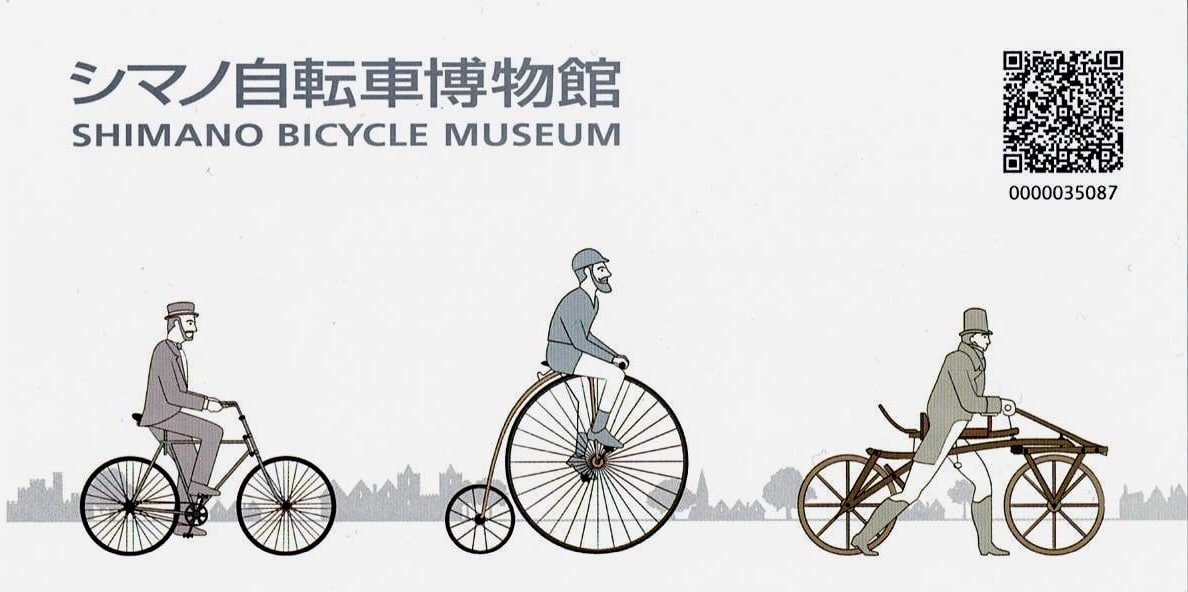
Osaka.com visits Shimano Bicycle Museum
Osaka.com visited Shimano Bicycle Museum twice in the past year in order to make sure our readers can get the best experience possible. The first time videographer Rodney Smith and I were given a private tour by the museum staff who very kindly answered many of our pressing questions. I then visited the museum with my wife as a paying customer a few months later to explore the museum as a tourist and to see if there was anything that I missed. I am glad I went twice because I discovered a treasure trove of historical items that I casually passed by on my first visit.
Museum Plaza 1F
Upon entering Entrance Hall you’ll find a free exhibit that is open to the public that showcases the history of bicycles in Sakai. There are also a few rare bicycles on display and an exhibition of artwork by children from local schools (we’ll get to that later). The free exhibition is nice as a public service to the community, but you’ll definitely want to buy a ticket to see the paid exhibition. You won’t see an exhibition of this quality for under $5 at most museums in the world, and a family can leisurely enjoy several hours here for less than $20 total.
Tip: When purchasing tickets, let the staff know that you would like to watch the short documentary films in English and they will schedule a time for you. The films are a very entertaining and informative part of the museum experience.
History Theater: The Birth and Development of The Bicycle
It’s hard to imagine modern life without bicycles, but the first bicycle wasn’t invented until 1817. Before examining the fine collection of early era bicycles, it is imperative to learn a bit on how this wonderful means of transportation was invented. I’m the type of person who usually skips educational films in museums, but I’m glad that I sat through this one because it was especially well-made and entertaining.

White Cube 2F
We headed up to the second floor to an area known as White Cube that has rare bicycles on display in three spacious zones. I don’t know who designed the Shimano Bicycle Museum, but hats off to whomever it was because the entire museum is easy to navigate, especially with small children. Since it is somewhat off the beaten path there will be days in which it feels as though you have the entire museum to yourself (I felt that way on both visits).
A Zone: Early History of Bicycles
After learning about the development of the bicycle, you’ll be able to view an impressive collection of early bicycles from the late 19th and early 20th centuries. I felt a sense of awe and excitement walking into the room and had to remind myself to calm down and take the time to learn about each bicycle in chronological order instead of rushing to examine the more unusual specimens on display.
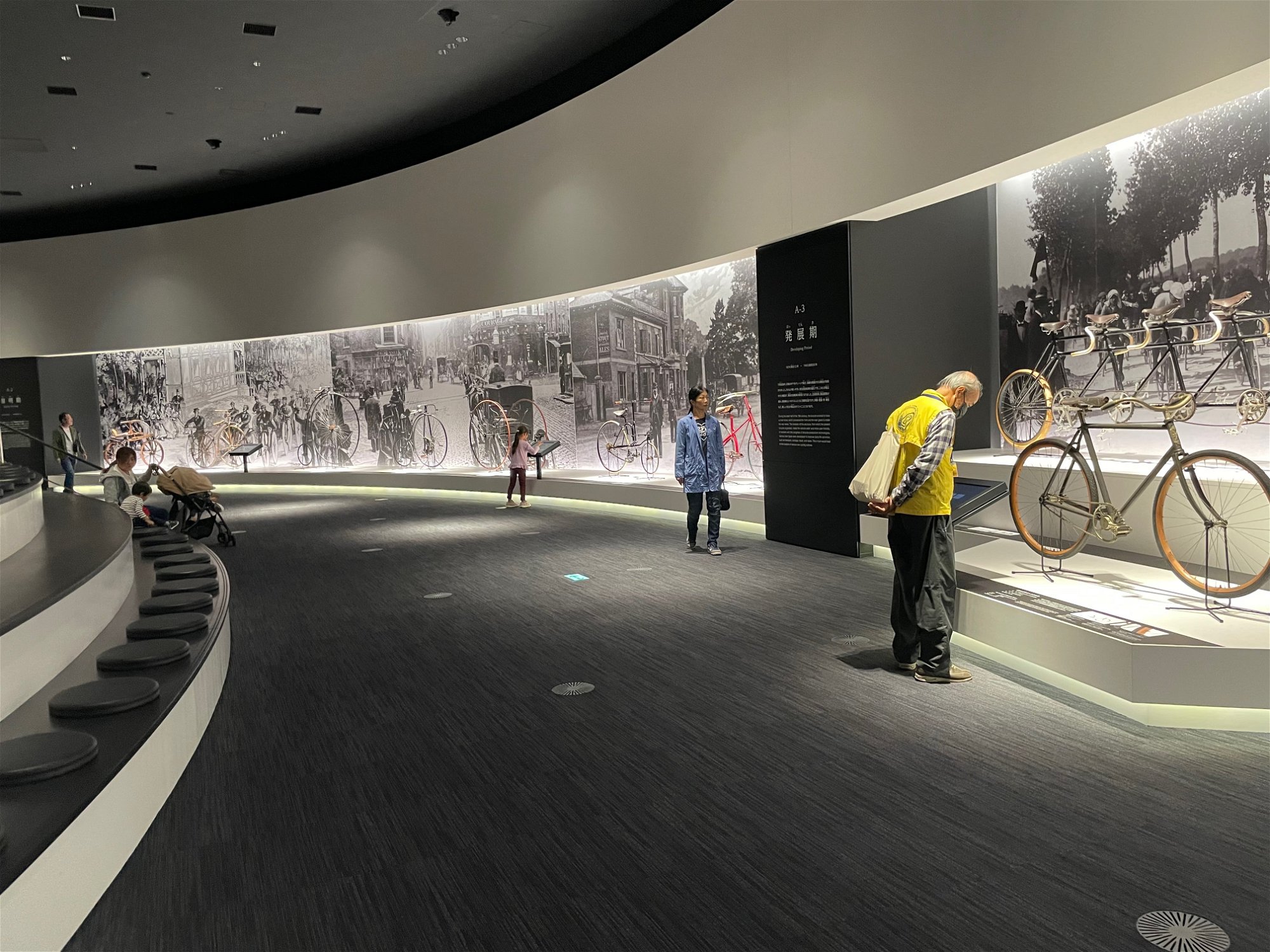
Draisienne and Penny-Farthing
The collection includes a rare draisienne from 1817, the first two-wheeled bicycle invented by Klaus von Drais de Sauerbrun of Germany. The bicycle has no pedals and the rider had to kick the ground with their feet to go forward. As a bicycle commuter for the past three decades I had to tip my hat to this inventor, although I could not imagine riding around the streets of Osaka while kicking my feet. Now that would be a spectacle!
It was also nice to see a penny-farthing, also known as a high wheeler or ordinary, that was manufactured in the United Kingdom in 1870. The name was inspired by the British penny and farthing coins, with the penny being significantly larger than the farthing, so that the bicycle’s side view resembled a larger penny (the front wheel) leading a smaller farthing (the rear wheel).
I have seen people riding these bicycles in silent movies, usually for comedic effect, but I can’t imagine getting on one of these without a helmet and extreme padding. It is hard to believe that people rode around on these bikes dressed in a suit and a bowler hat! It seems like something out of a Monty Python sketch with John Cleese!
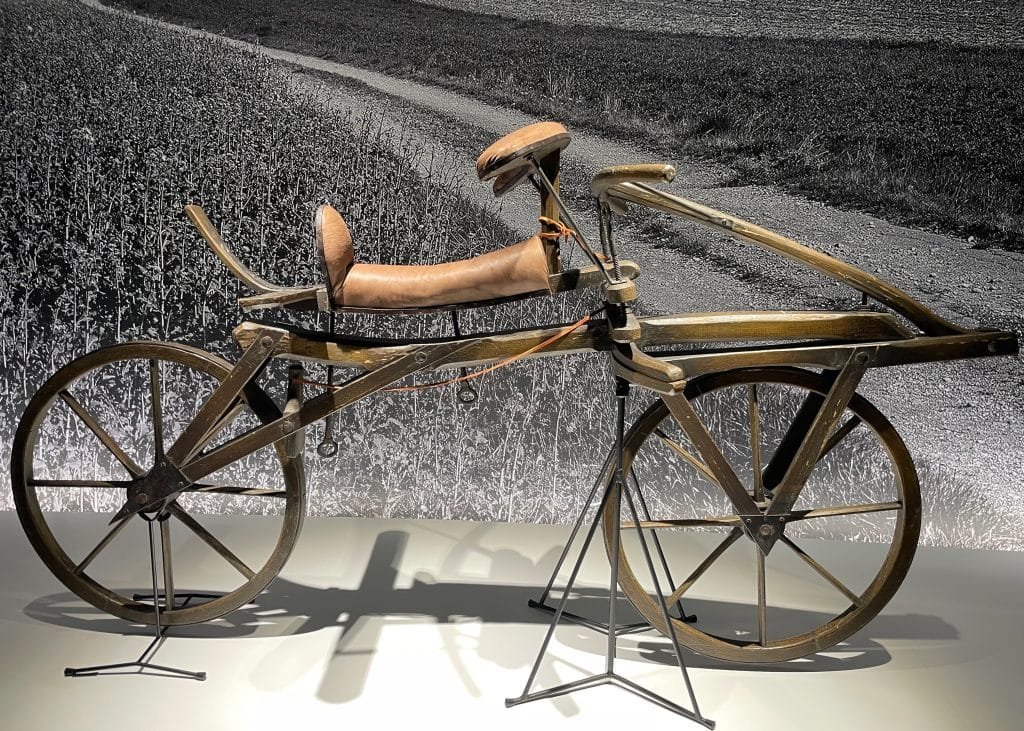
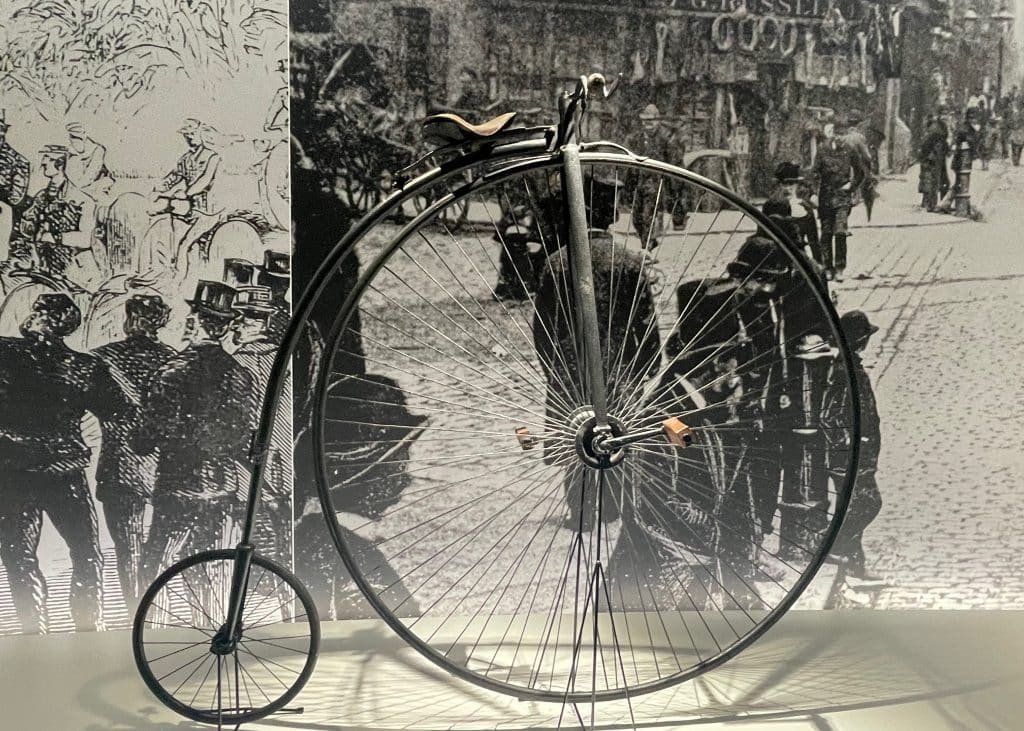
Five Seater Racing Bicycle and Dutch Milk Bicycle
I also had to stop and admire an impressive 5-seater racing bicycle that was manufactured in The Netherlands in 1897. The following year a Dutch team of five riders won at the World Cycling Championship by covering 3000 meters in just under four minutes. It’s too bad that footage does not exist of this important achievement in sports, because I really wanted to see how they pulled it off.
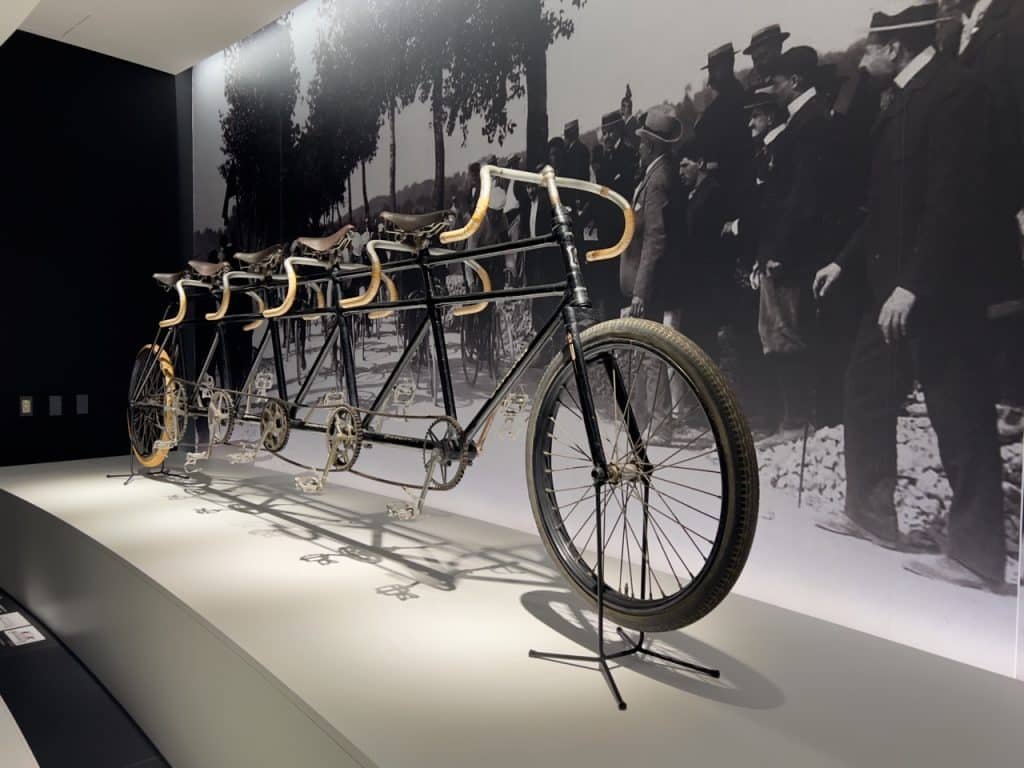
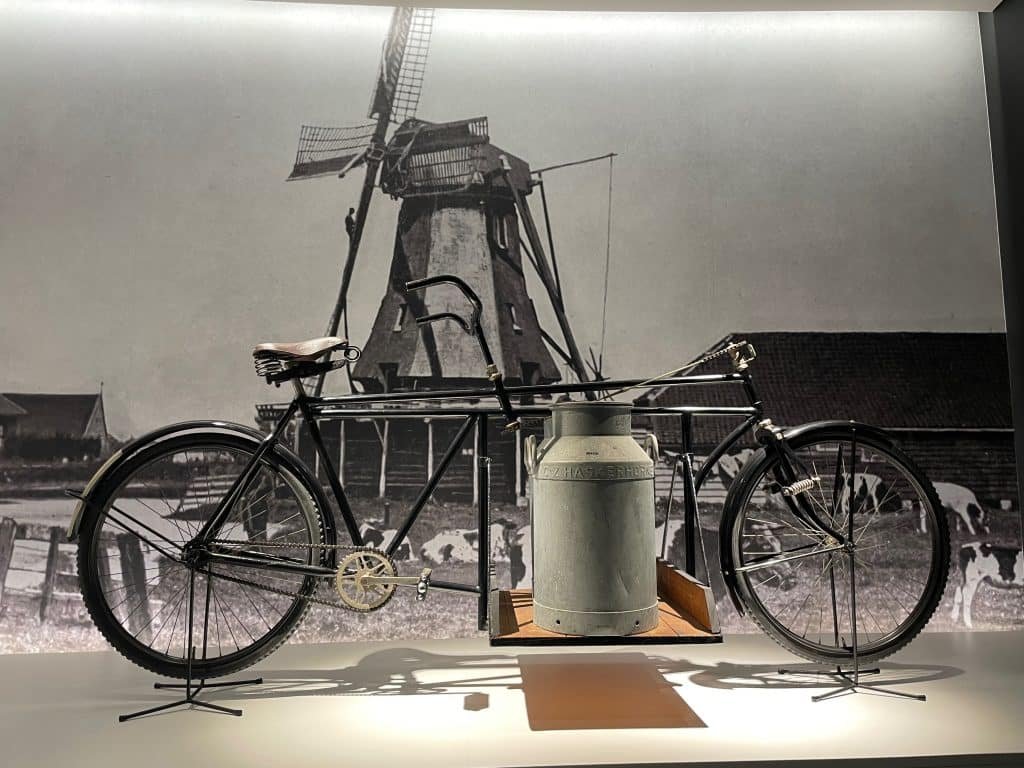
The Dutch Milk Bike on display is another fascinating bicycle from The Netherlands that was manufactured in 1930. In order to accommodate two large 34 liter milk cans, the handle bar and the front wheel had to be far apart. I imagine that steering was a challenge at times and a certain level of skill was required to navigate in order to keep the bicycle from tipping over and spilling the milk!
Panorama Theater: Inventors and Dreams (Japanese or English)
School children often learn about inventors and innovators such as Thomas Edison, The Wright Brothers and even Steve Jobs, but could the average adult name the innovative minds who invented and developed the bicycle without googling? After going through the exhibit you can watch an fascinating film on the panorama screen above that highlights the achievements of innovators such as Pierre Lallement, Kirkpatrick Macmillan, Pierre Michaux and several other luminaries who contributed so much to society with their inventions.
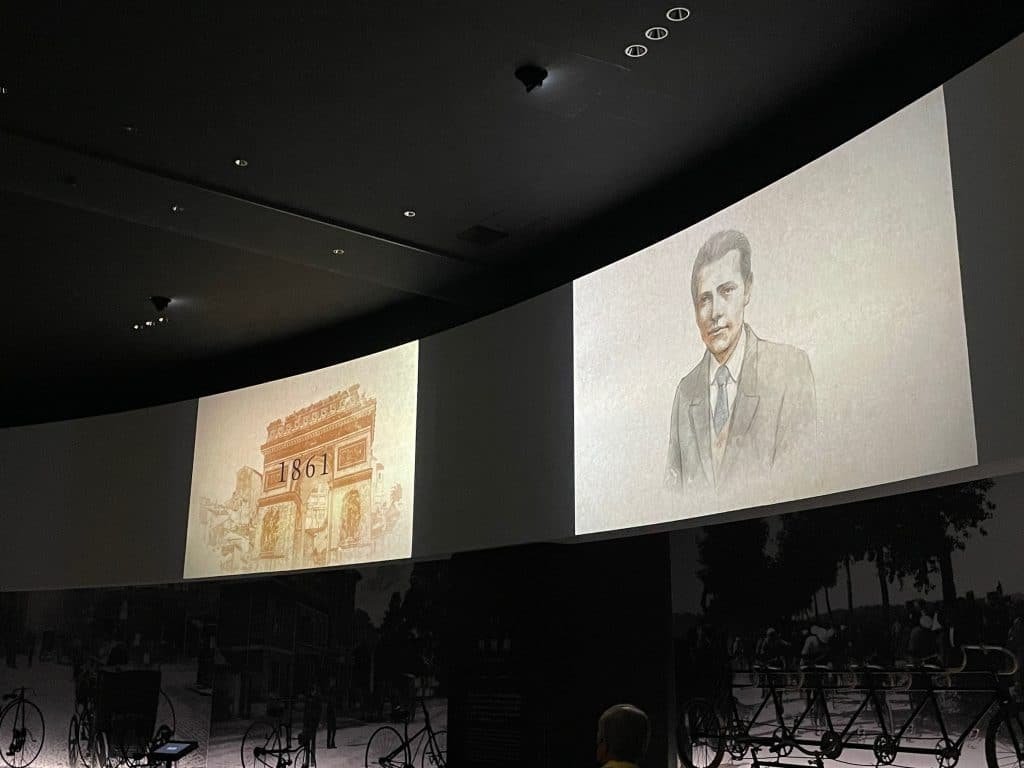
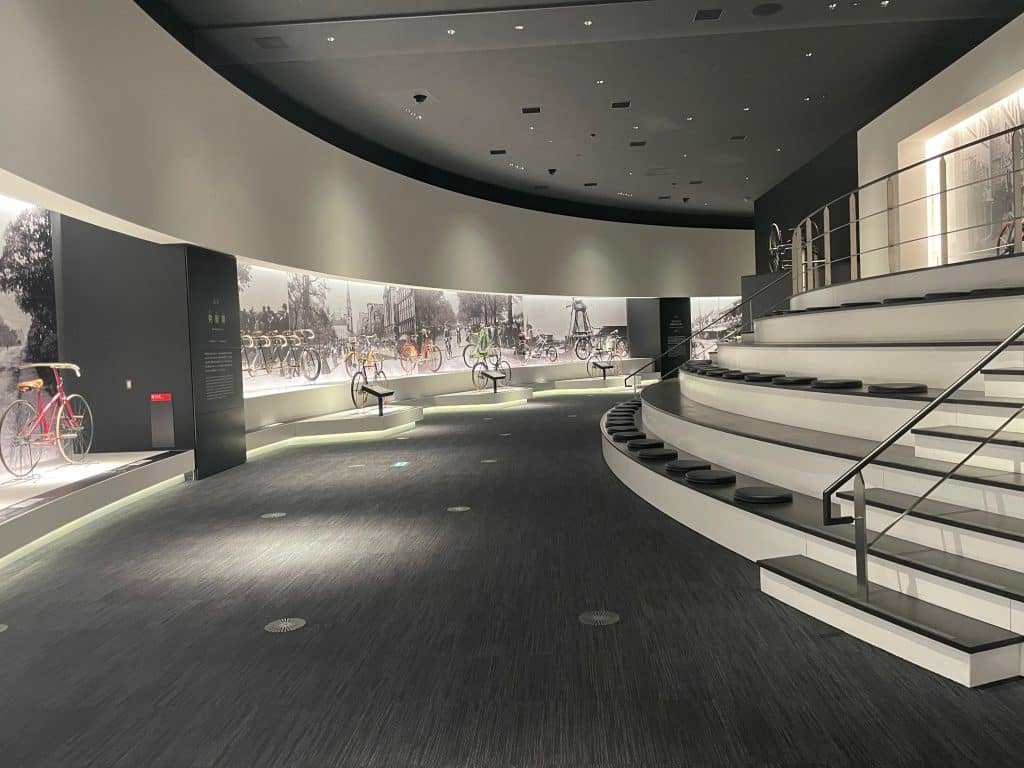
B Zone: Spread of Cycling Culture
I really enjoyed perusing this area that features quite a few classic designs and newer models that show the spread of cycling culture over the past 100 years or so. There are far too many examples to list here, so I’ll simply introduce some of my favorites, starting with the bicycle that was used to set the world speed record in 1950 by German racer Karl Heinz Kramer.
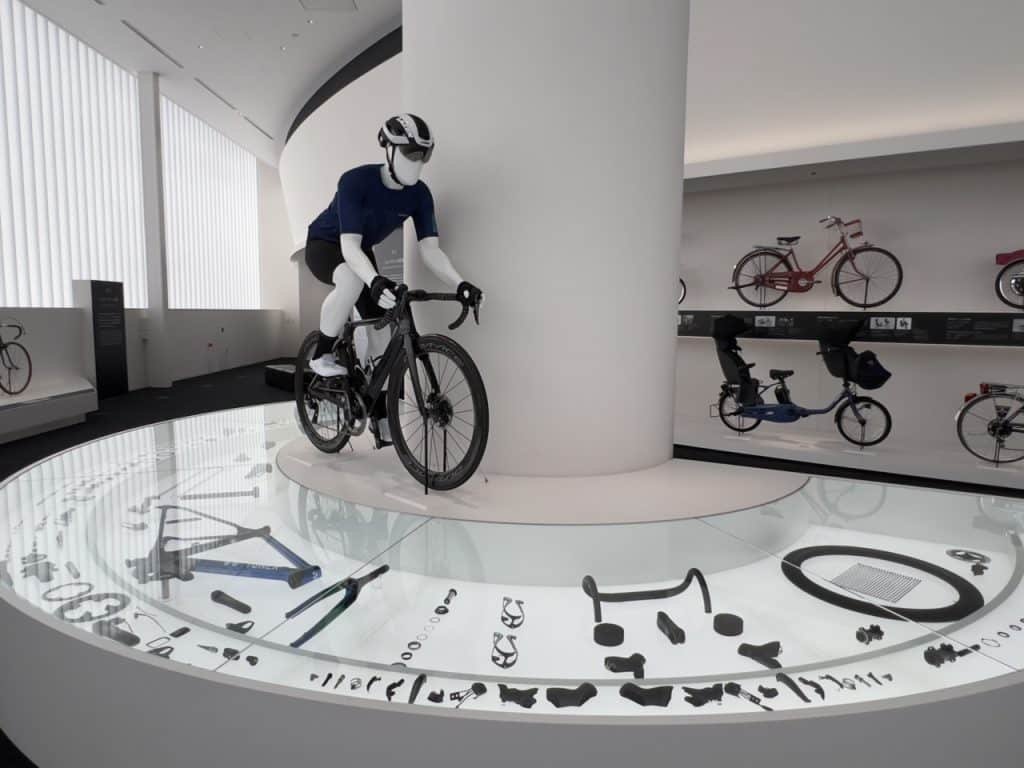
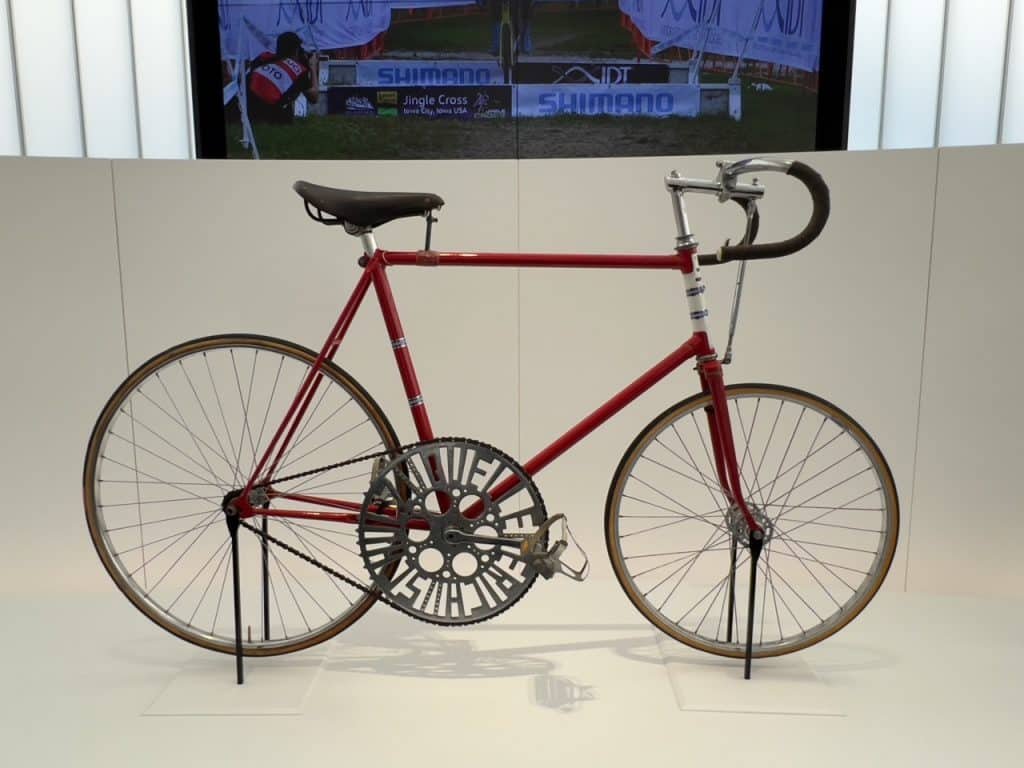
Another standout was the Littorina wooden bicycle from Italy that was designed in 1944. Starting with the plywood frame, the handlebar, seatpost, rims, mudguard and chain chase were completely made from wood. It’s a fine specimen that showcases the elegance of Italian design.
History buffs will marvel at the Magaly, the first derailleur to win the Tour de France in 1937. It was ridden by French rider Roger Lapebie after the ban was lifted on derailleur bicycles from competing in the race that began in 1903.

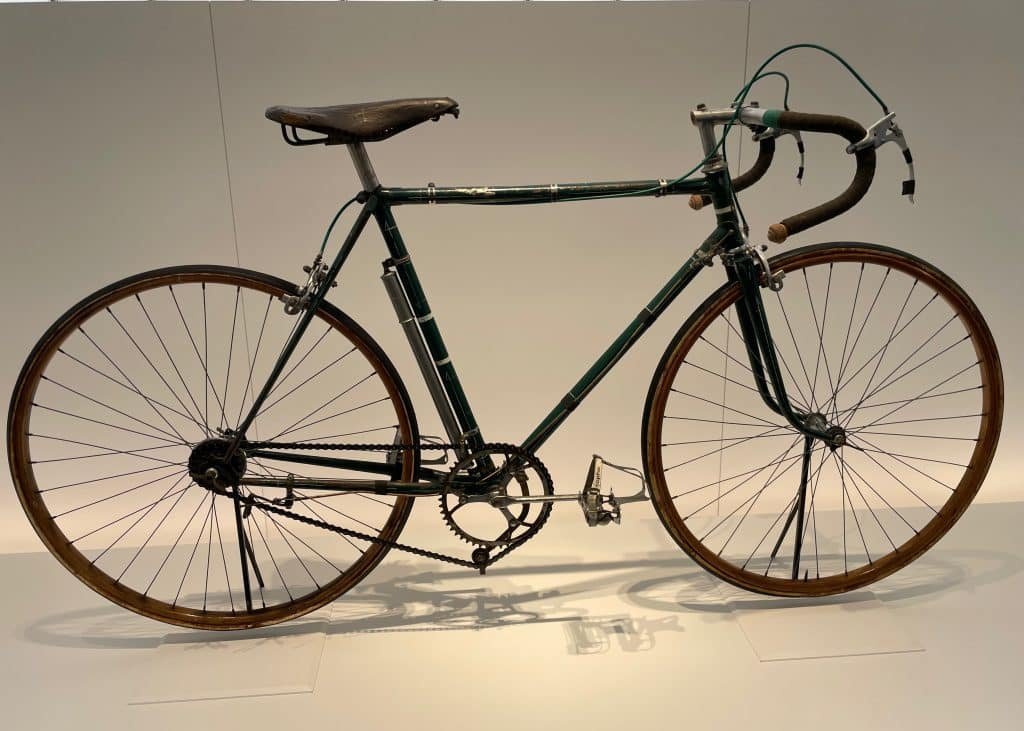
My eyes almost popped out of my head when I first glimpsed a replica of a bicycle designed by Harley Davison in 1994 that was designed to look like a motorcycle. Imagine the lucky children who received this bicycle replete with a replica engine, gas tank, and a horn that could make an engine exhaust sound under the tree as a Christmas present!
This exhibit also features some impressive modern designs, including a 2021 Creepo Shadow-R from Japan that is used in the 180-km Ironman Triathlon. This bike was designed to “minimize air resistance to allow the rider to compete in the long distance faster and easier.”
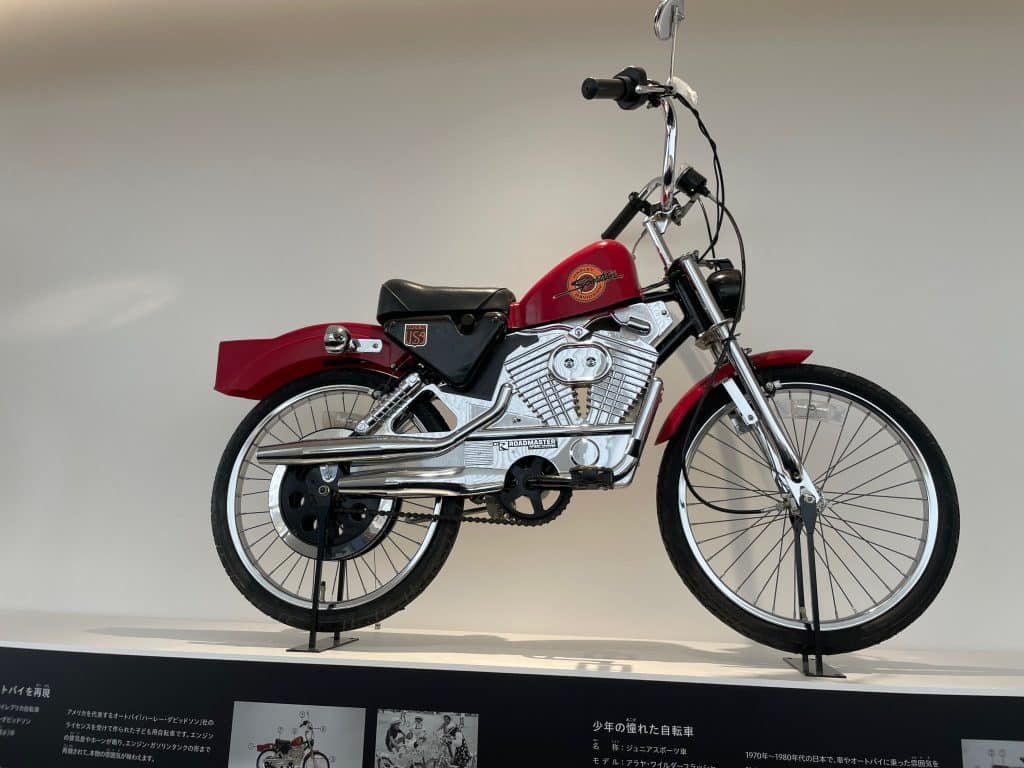

I’ve always been fascinated with stories of people who have traveled across a foreign country on a bicycle. It’s a great way to meet people and get to know local communities on a more intimate level than using public transportation. Cyclists abroad often have to depend on the kindness of strangers if they get lost or need assistance if something breaks down.
The museum has two bicycles in its collection from cyclists who captured the attention of the nation. The first one is a 1972 Schwinn Paramount that was featured in a 1972 travel show called “The Wonderful Bicycle Guy,” in which a young man traveled across Arizona and Texas and interacted with local people. The exhibit includes an American flag that he attached to his large travel case.
The second bicycle on display is a Cannondale that was ridden by a man named Tatsu Sakamoto who set out on a trip around the world in 1994 that took him to 43 countries that lasted for over four years. You can see the toll that this trip took on his bicycle and battered equipment such as his helmet, bags and bicycle shoes. I was glad that Mr Sakamoto donated these treasured items to the museum.
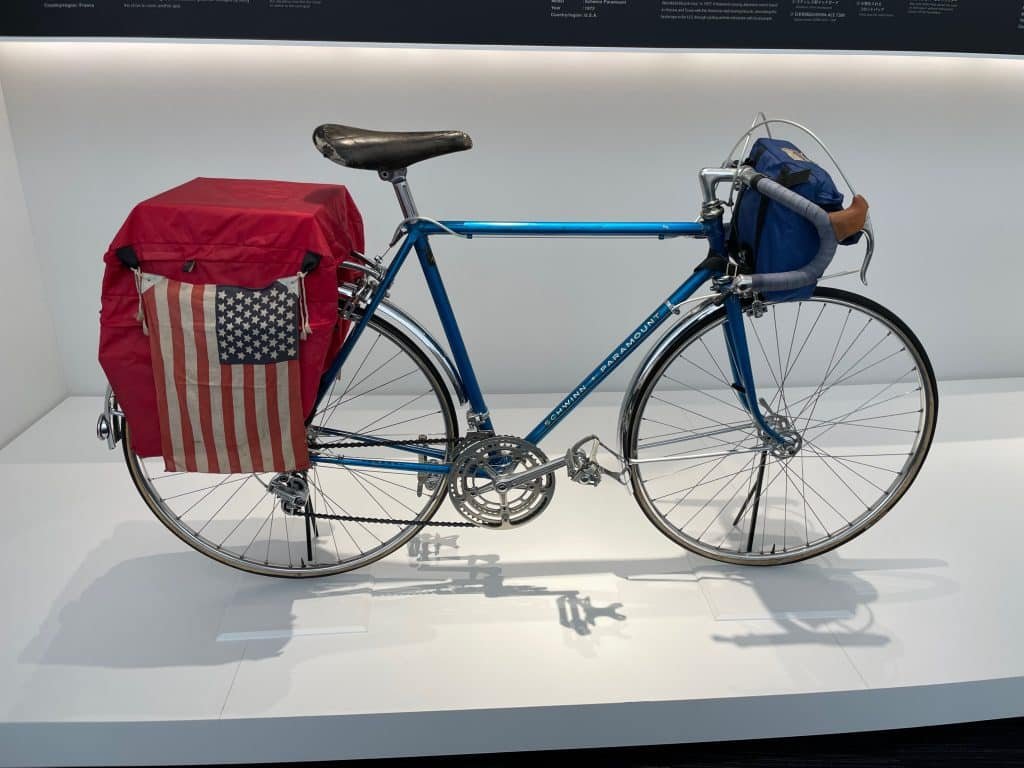

As mentioned above, The Shimano Bicycle Museum is a hands-on interactive experience and visitors can get a better understanding of the science and technology of the main components of a bicycle by controlling different parts. My wife and I especially enjoyed testing the breaks and it was nice to see how the mechanisms functioned up close and personal—something that is hard to do when you are riding a bike!
C Zone: A Bicycle for Tomorrow
The exhibits in this section suggest ways to enrich our health and realize a sustainable society through the use of bicycles. There is a mural on the wall that shows the health benefits of riding a bicycle such as improving blood circulation and burning fat.
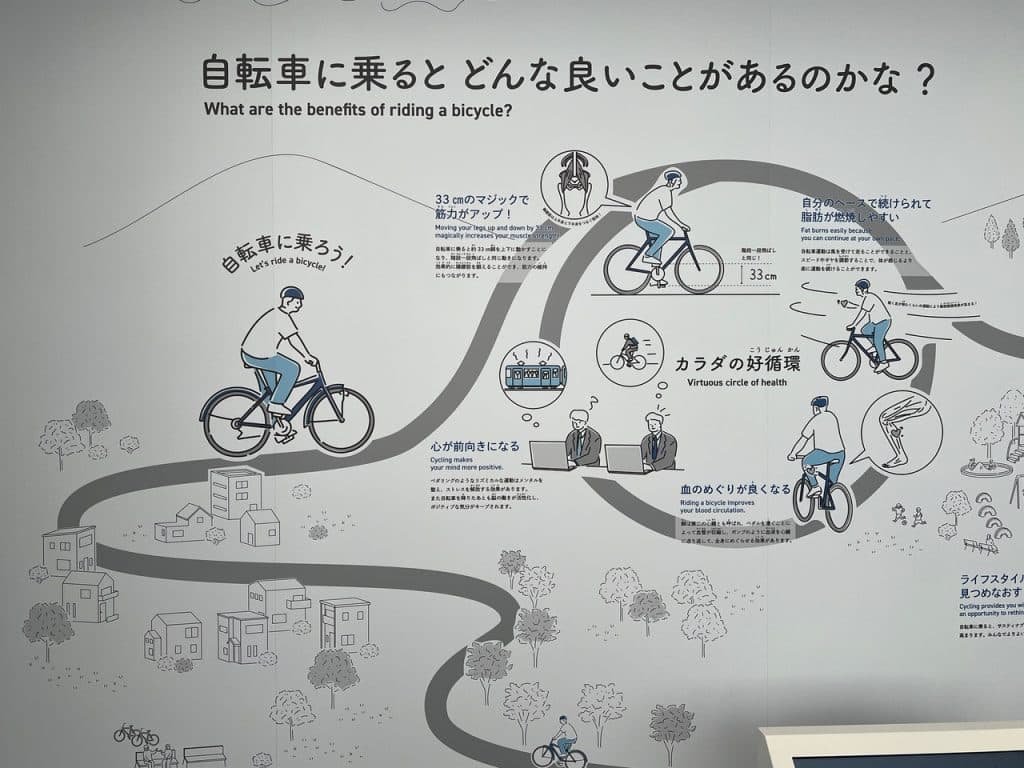
One of the world’s lightest road bikes, weighing only 6.8 kilograms, is also on display. The average bicycle, on the other hand, weighs 15-20 kilograms, and visitors can feel the difference by lifting the bike. I was able to lift it with one hand without much difficulty. Lighter bikes are easier to move on public transit and can contribute to a reduction in our reliance on fossil fuels.
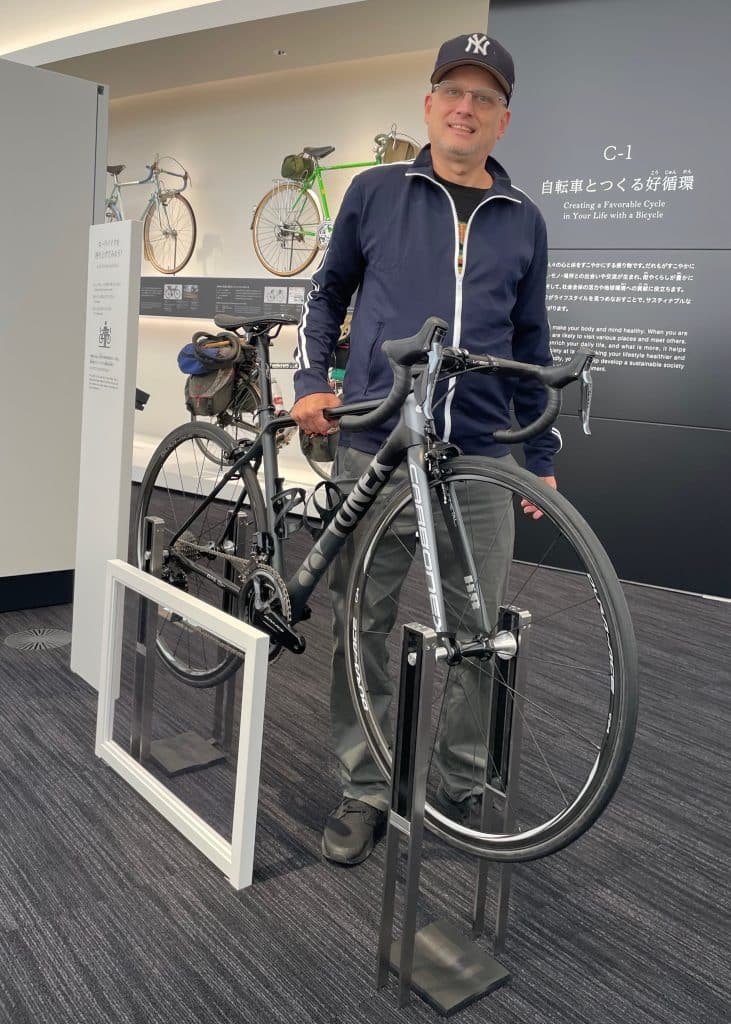
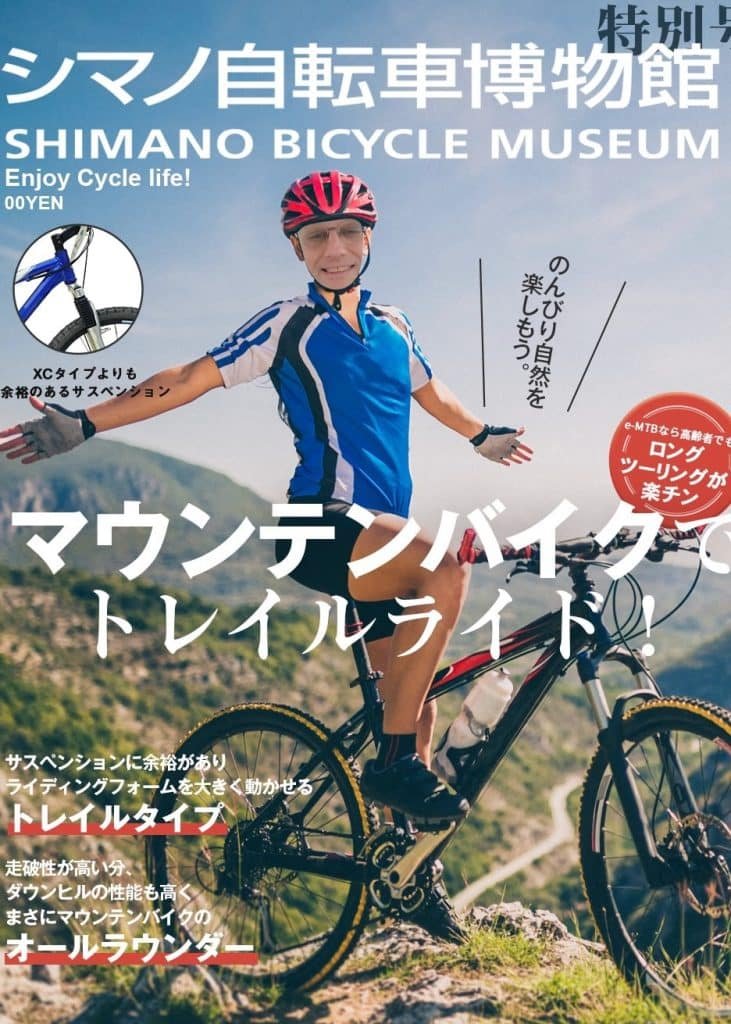
While all of the exhibits have bilingual explanations in Japanese and English, there is one really fun interactive activity appears to be entirely in Japanese. Visitors can use a touch screen to choose their bicycle preferences, such as sports, diet and exercise, travel, or shopping, and a virtual cycle life concierge will design a magazine cover with your face implanted into the body rider based on their selections. Then, using the QR Code on your ticket, save it to your phone. Shimano Museum is more of an educational facility and doesn’t have a pricey gift shop like most museums, so it makes a nice digital souvenir of your visit that you can print out and frame
The Bicycle Gallery
Bicycles from the museum’s massive collection are displayed on the walls of atrium and rotated in and out periodically. When I visited the first time I saw a bike that was used by Lance Armstrong, but it wasn’t there on my second visit. Among the many impressive bicycles in this collection are a pair of limited-edition touring bicycles (only 8 were made) that were offered to the Crown Prince and Princess of Japan in 1959. You can also see a futuristic-looking Vector that was used to set a new human powered speed record in 1980. My personal favorite was the enclosed all-weather bicycle designed by a plastic company in Toyama in 2003. It looked like something you would see in the film Bladerunner.
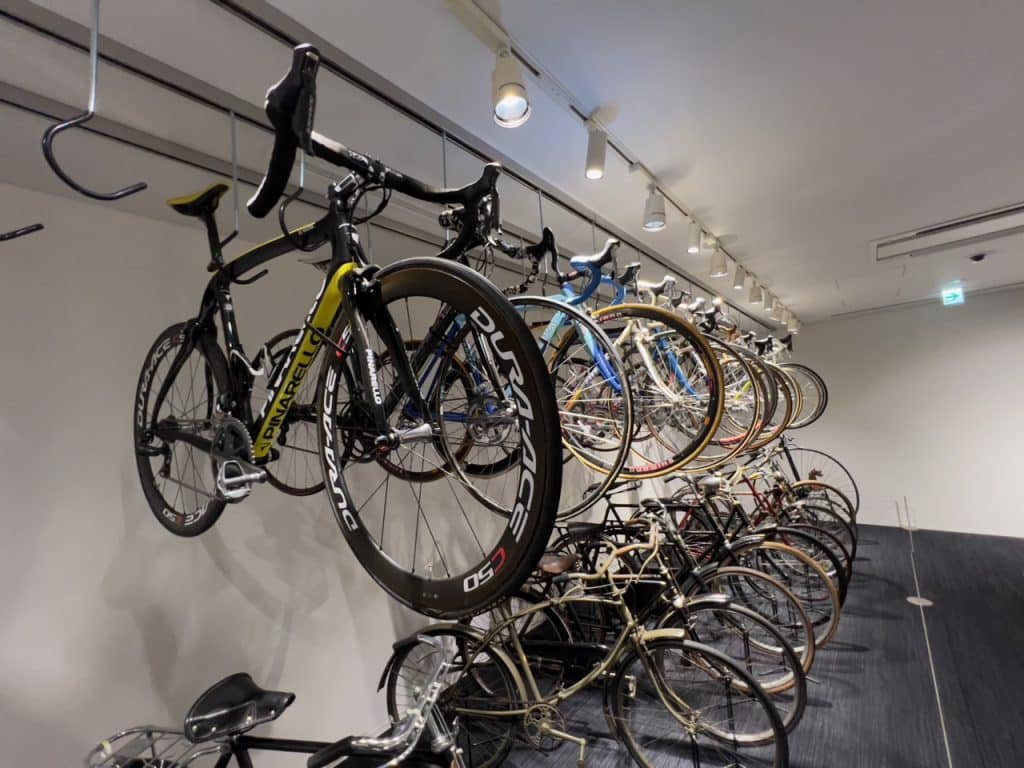
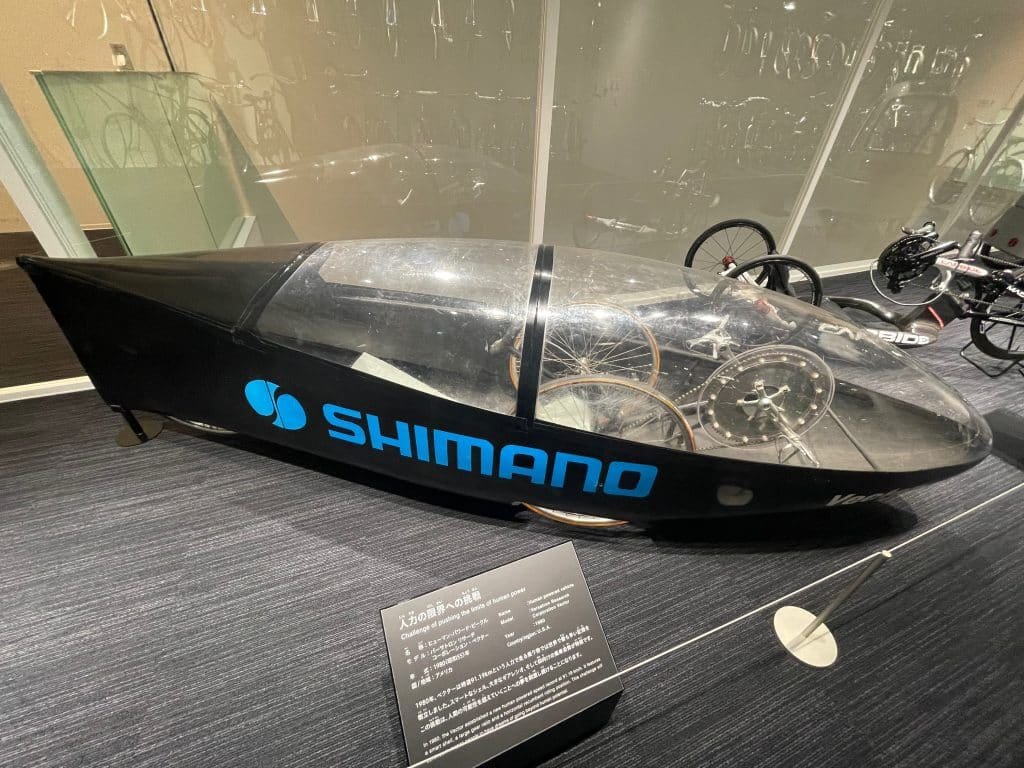
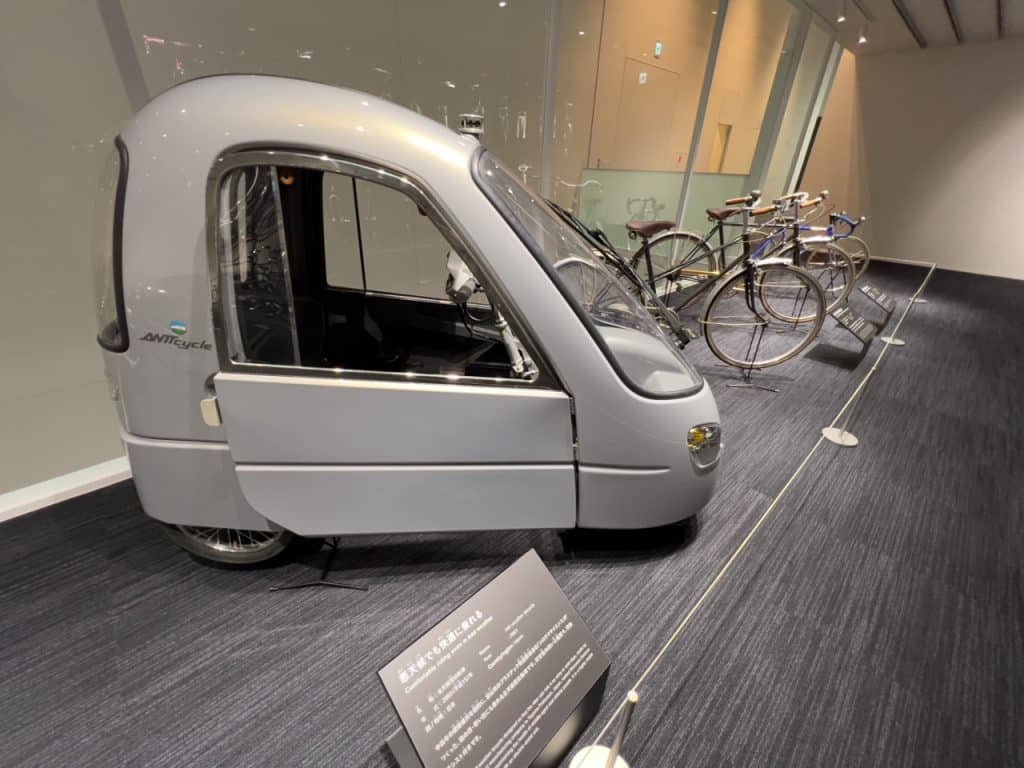
Corridor of Bicycle History 4F
The second floor was a lot to take in and we could have spent another hour perusing the collection, but we decided to take the elevator to the fourth floor to check out the current exhibition.
Street of Bicycle Components and Multimedia Library
On our way to the exhibition we stepped into the Street of Bicycle components, an immaculate display that shows how bicycle components have evolved over the years. Although the display was very impressive I didn’t spend more than a couple of minutes here, but I’m sure a hardcore cycling enthusiast would have been in seventh heaven seeing all of these invaluable items gathered in the same place.
The Multimedia library featured a collection of books on cycling in multiple languages including English and French. There are computers available so that visitors can search the archives to find out more information on bicycles in the museum’s collection. While there I noticed a couple of school children who seemed to be doing research for a school project. Or maybe they just wanted to know more about the bikes.
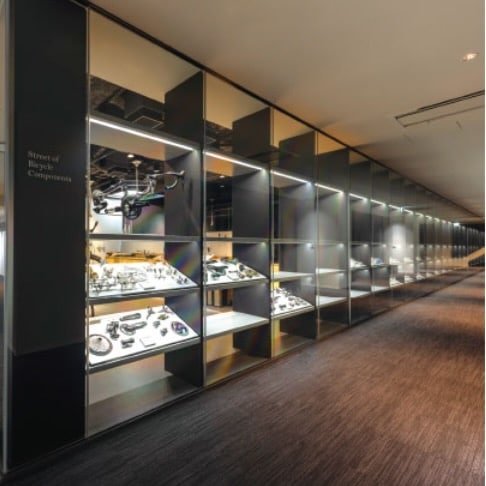
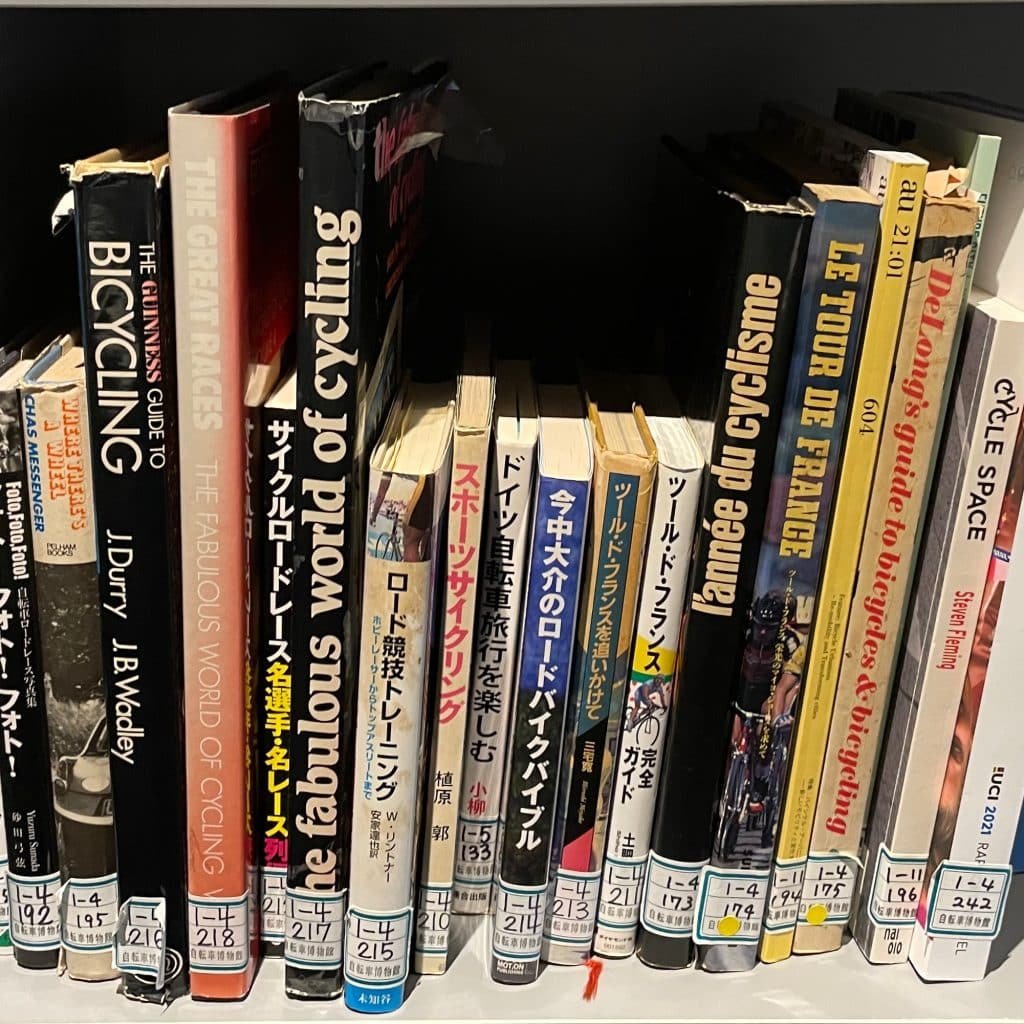
Special Exhibitions
I attended the special exhibition twice this year. The spring exhibition featured the Sakamoto Family Adventure. Tatsu Sakamoto is a salaryman who received a special paid vacation in 2015 of four years and 3 months by his employer Miki House in order to bicycle around the world with his wife and two small children. Sakamoto visited SDGS around the world and gave lectures while homeschooling his children on the road.
The spring exhibit also featured a cyclist by the name of Masanori Nishikawa who has traveled 100,000 km by bicycle in 38 countries. Nishikawa makes his living by linking Japanese elementary schools with schools from all over the world and giving lectures. Nishikawa also gives out free coffee in order to promote international friendship, which you can see on his YouTube channel.
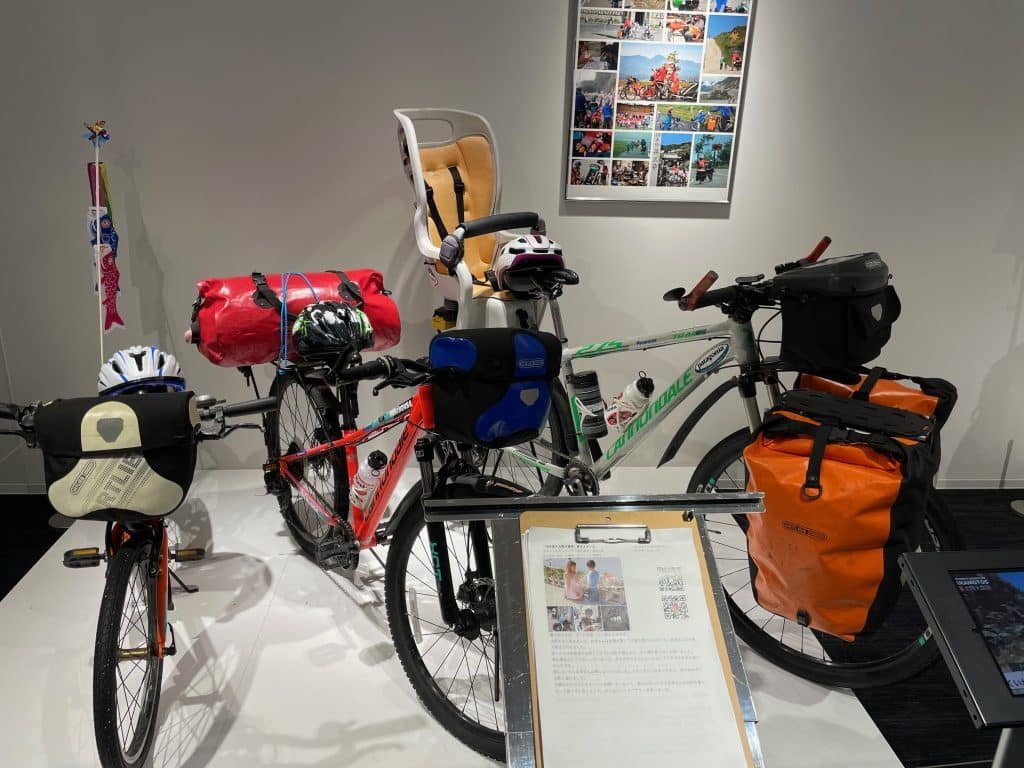
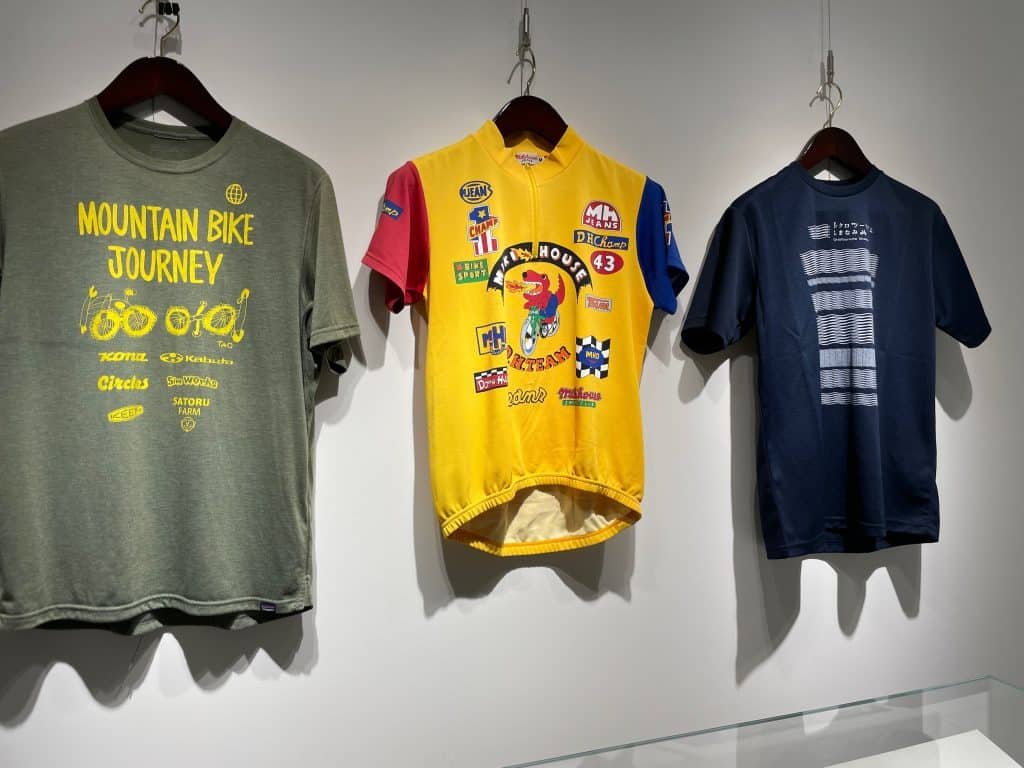
The second exhibition, which I attended in autumn, was Evolution of Road Bikes from 1960 until the present. Visitors can compare steel, aluminum and carbon frames from each era. This exhibition will run until March 31, 2024.
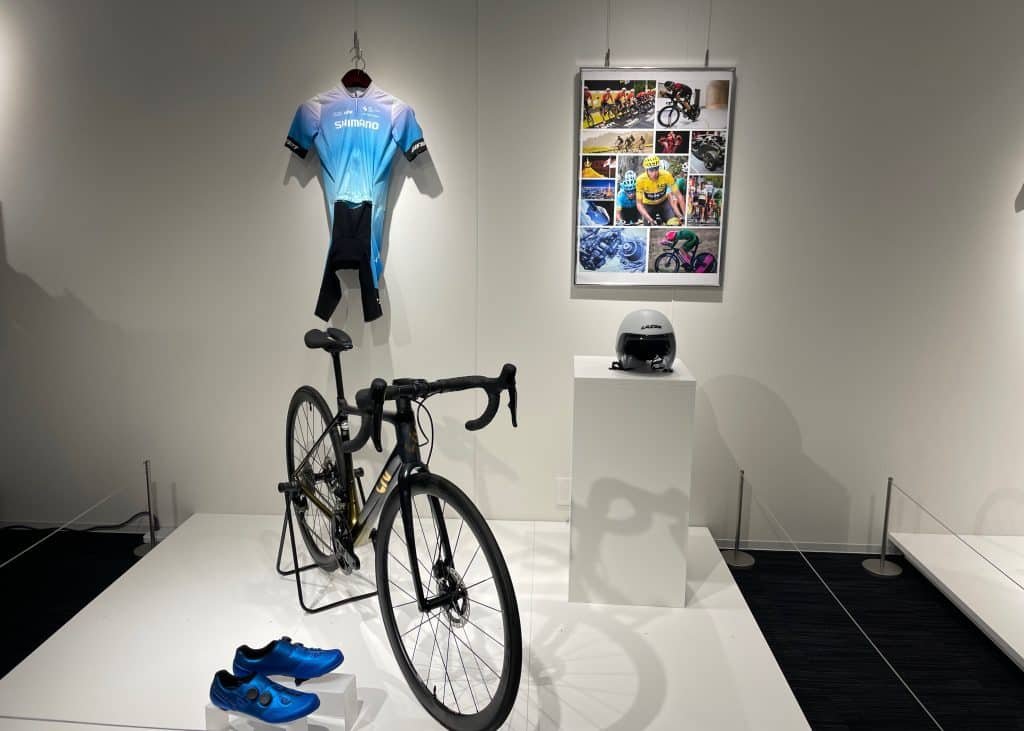
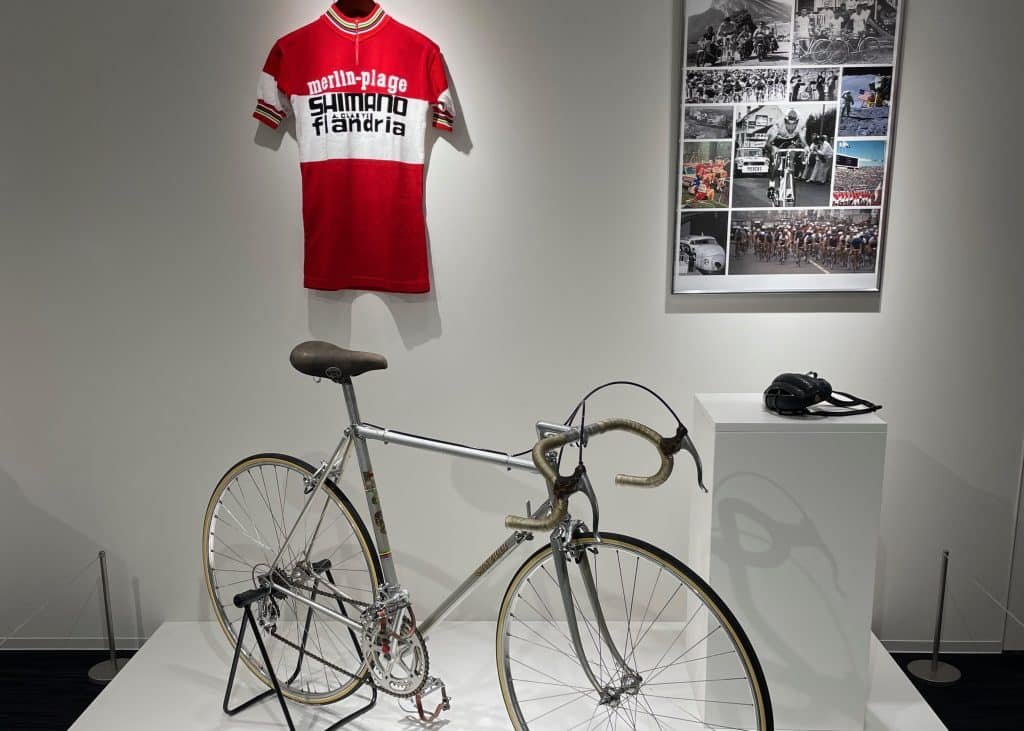
Gallery: School Children’s Art 1F
The last part of the museum that we visited was an exhibit of painting by local elementary students on the first floor by the entrance hall. The students participated in a summer vacation painting contest with the themes “Lifestyles of People and Bicycles,” “Sketch of a Bicycle in the Museum” and “My Dream Bicycle.”
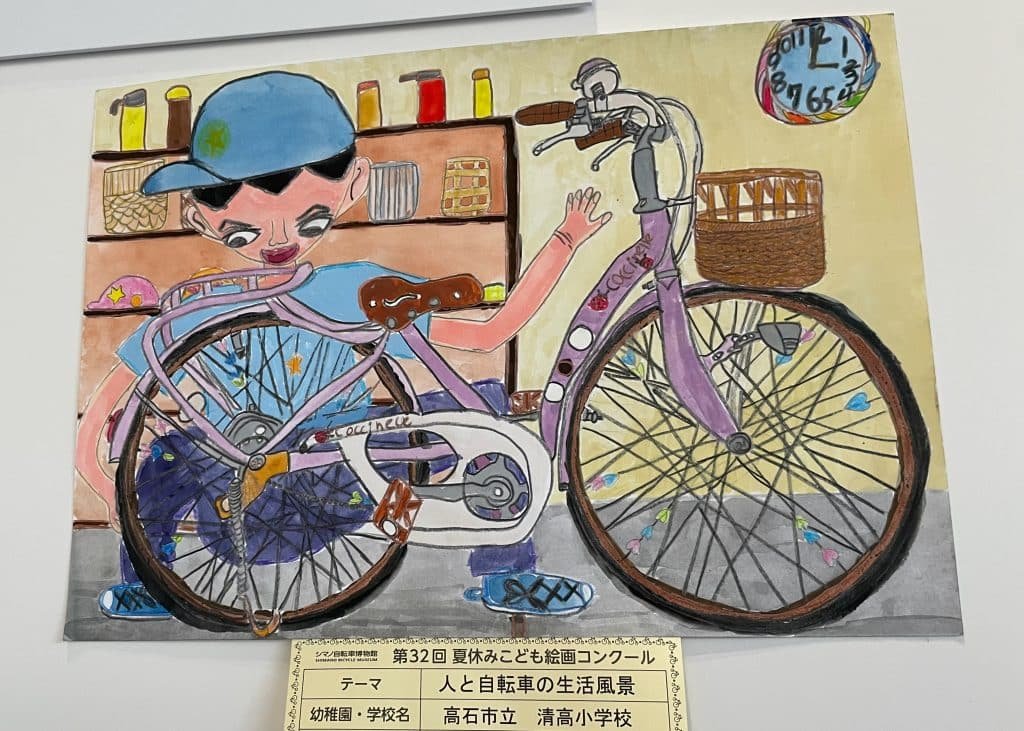
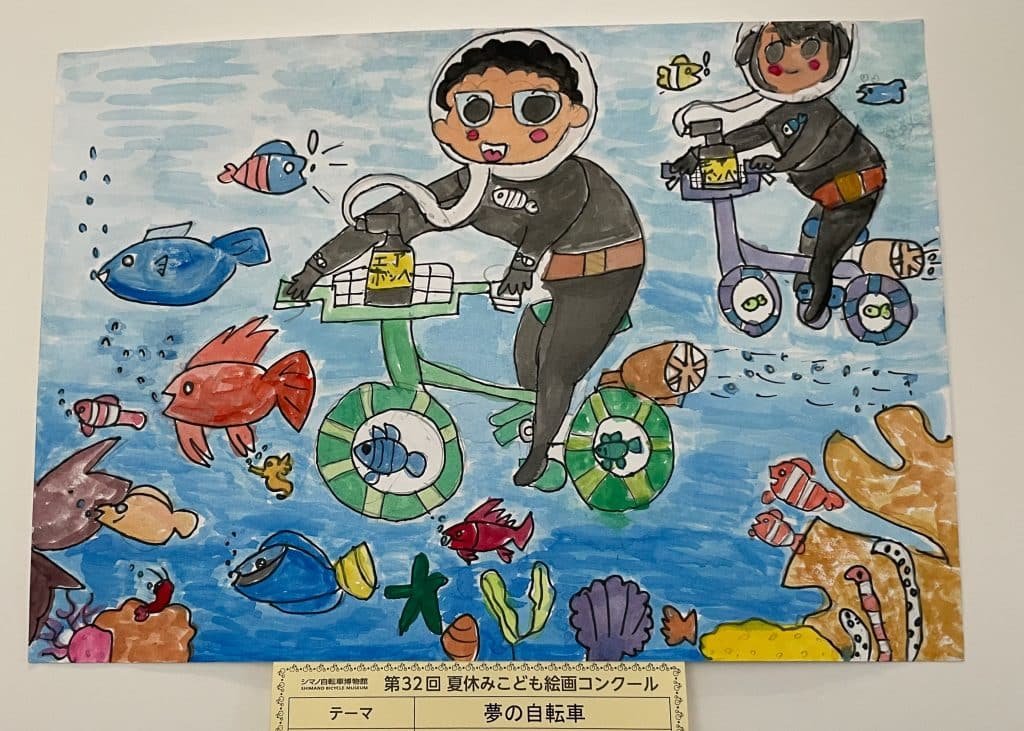
This was one of my favorite exhibits because these children were really talented. The museum received over 33,000 entries and the best ones were put on display. I thoroughly enjoyed taking the time to look at their artwork and it must have been a real thrill for them to see their work in a real museum. The best museums, in my opinion, are those that feature work by members of the community, especially children. I noticed that digital copies from previous exhibitions could be viewed upstairs on a computer in the Multimedia Library.
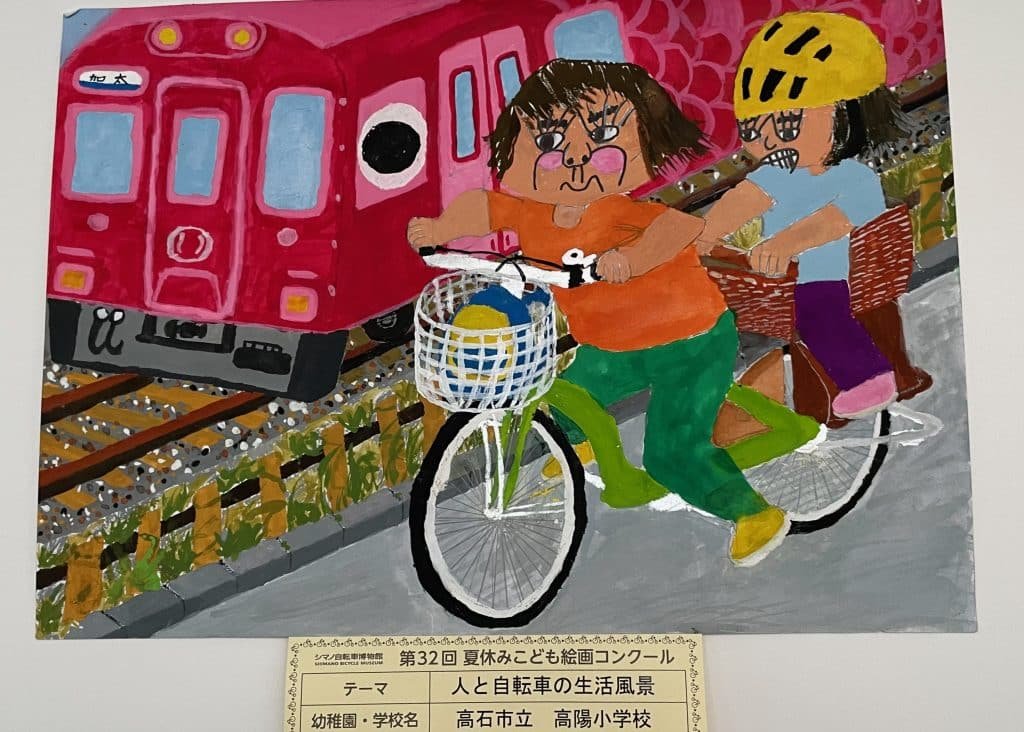
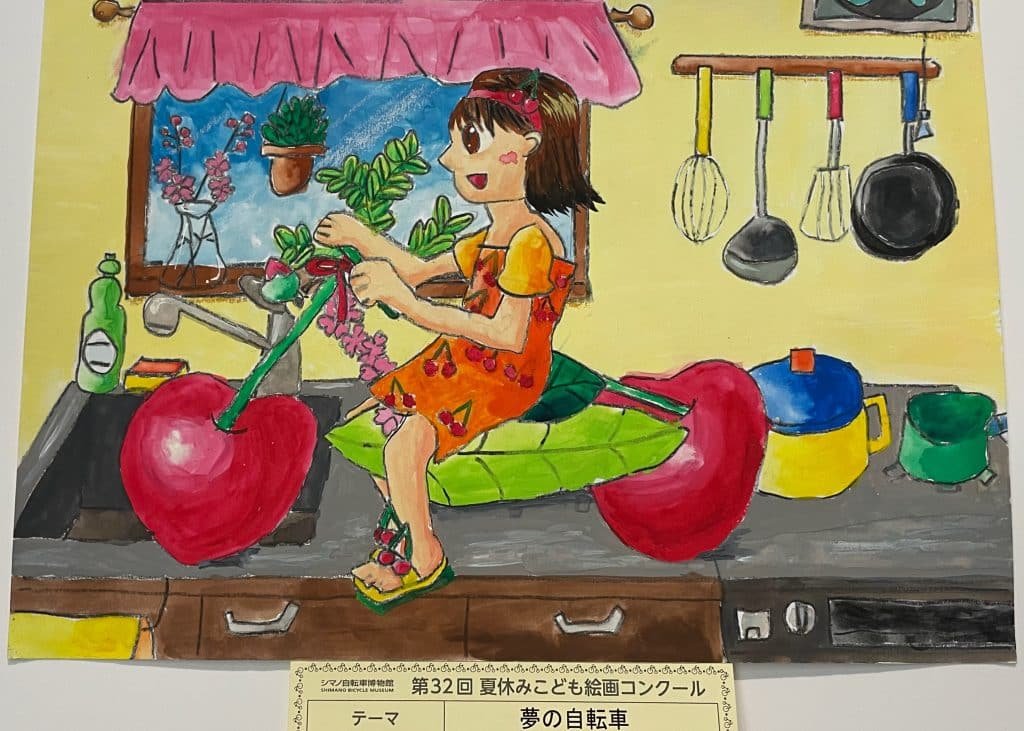
We had a fantastic time at the Shimano Bicycle Museum and I’ll definitely come back with friends and family in the near future. Although it seems like I covered a lot of ground in this article, in truth it is only a tiny fraction of the museums extensive collection. This is a museum that can be visited once or twice a year to get the full experience.
Shimano Square in Grand Front Umeda
Address: 3-1 Grand Front Osaka North Building Knowledge Capital, Ofukacho, Kita Ward, Osaka 530-0011. Tel: 06-4256-6789. Open: 11:00-17:00. Closed: Mon. Website

Grand Front is a large-scale contemporary shopping complex north of JR Station in Umeda that opened in 2013. It has over 260 shops, services and restaurants, an intercontinental hotel and a residential tower. Shimano Square is a cafe that has bicycle parts and fishing gear on display. There are also panels and video exhibits that introduce examples of bicycle and fishing culture.
The cafe holds various events themed around bicycles and fishing, including lectures by invited experts and workshops. The cafe also offers a concierge service that will assist visitors in planning for a road trip by bicycle or a fishing expedition. You can also sign up to participate in chartered fishing and cycling excursions as part of a group, but those participating will need to speak Japanese as no English translation is provided.
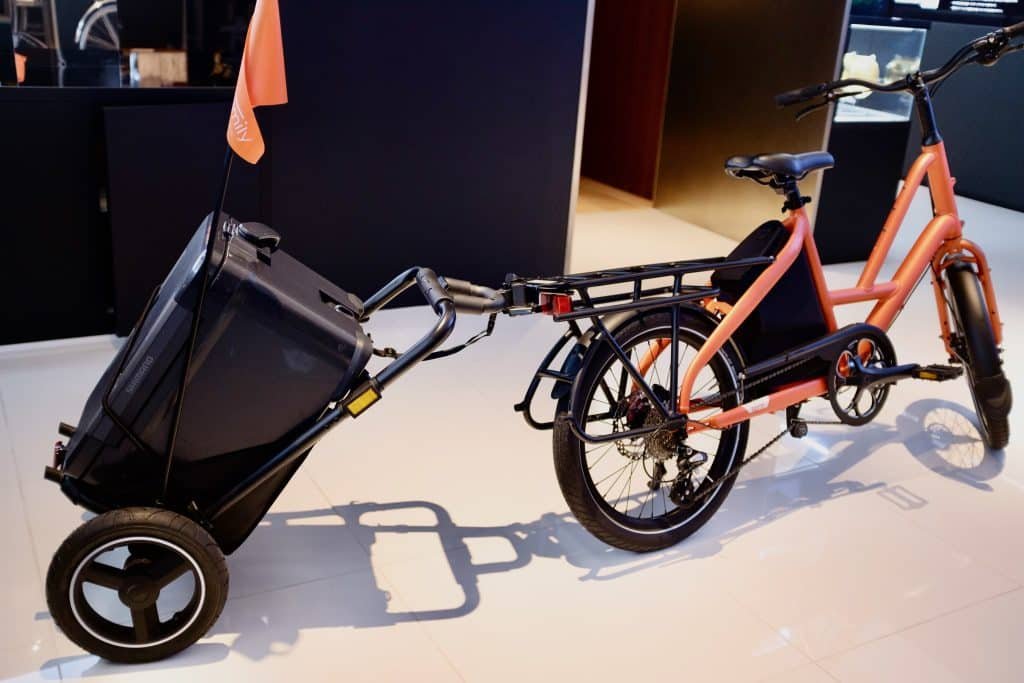
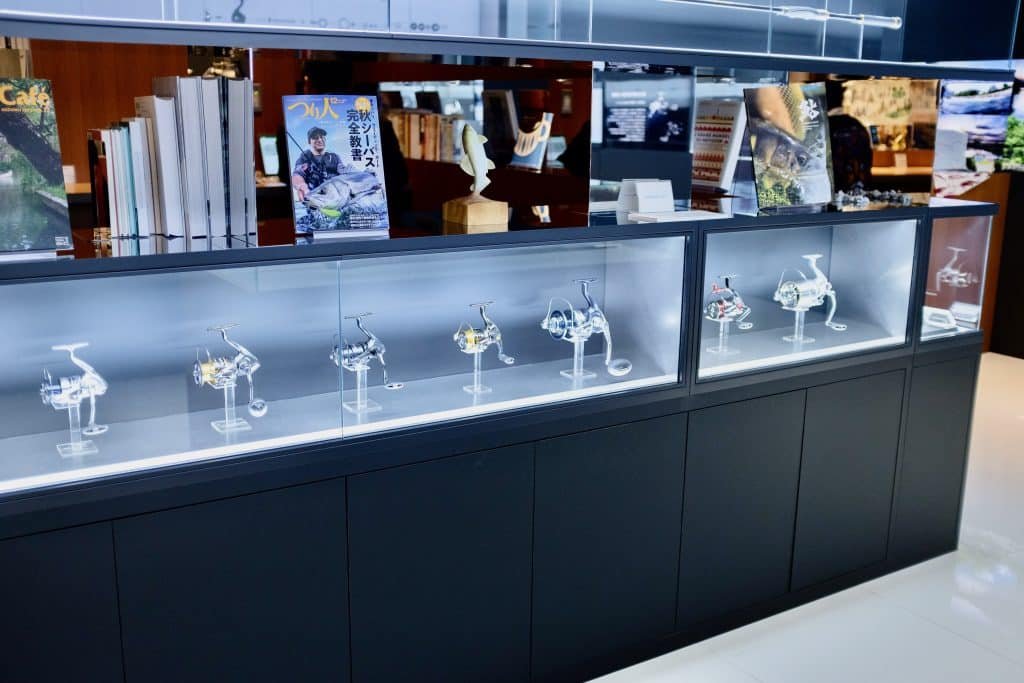
Shimano Square also provides a free virtual cycling simulator. Visitors can hop on stationary bikes equipped with VR technology to take virtual rides through iconic cycling routes. It’s an opportunity to feel the thrill of the open road while staying indoors. You can even compete with other riders all over the world. It’s a nice way to get a bit of exercise in the middle of the day, especially in a crowded place like Umeda, and it’s a lot cheaper than joining a gym.
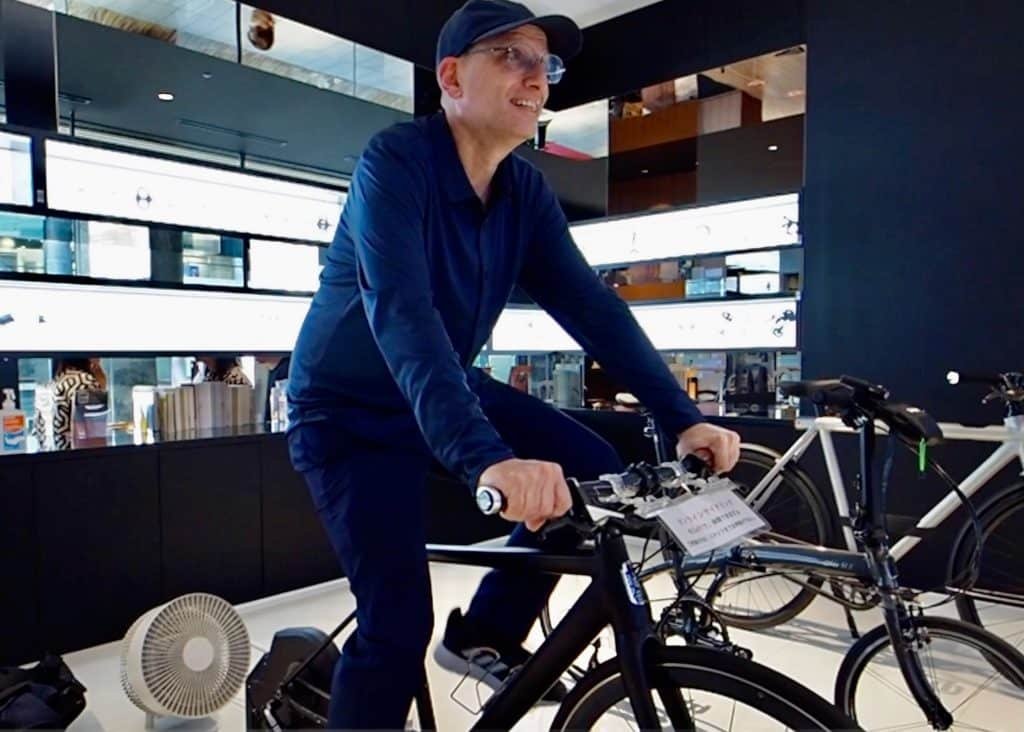
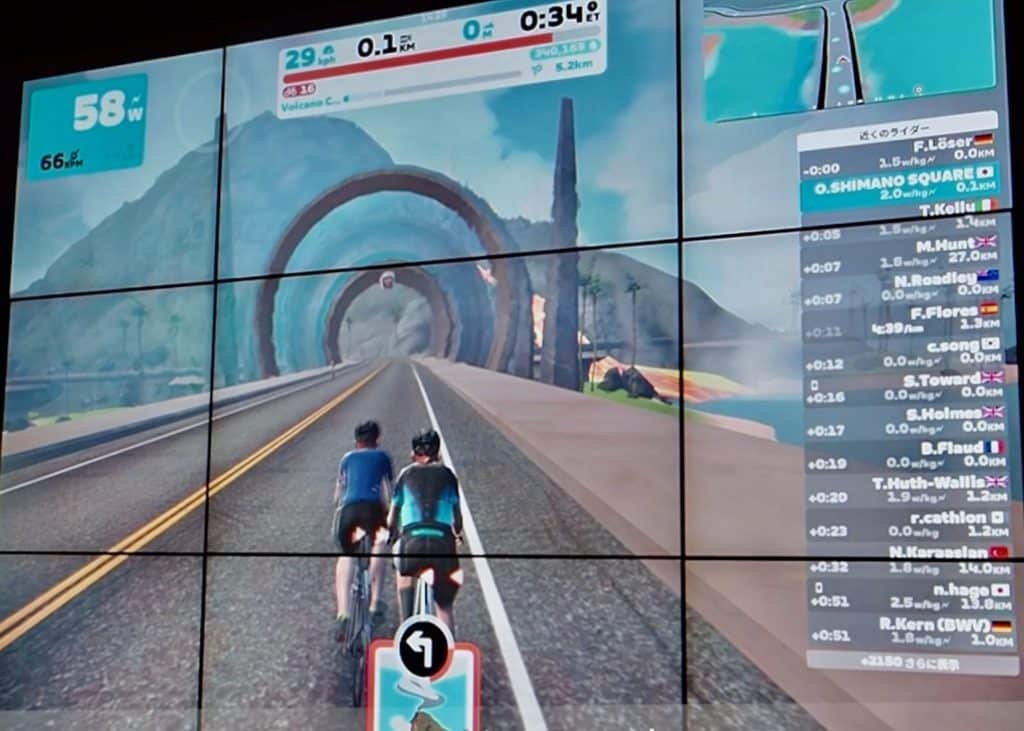
After ten minutes of virtual cycling, I was ready to sit down and enjoy a nice meal in the cafe. I decided on the spicy pastrami sandwich for ¥900. The pastrami had a hint of black pepper and was paired with rich cheddar cheese, potatoes, carrot rabe and arugula.
The cafe offers an original blend of coffee made with a blend of Hawaiian Kona and Brazilian beans, but I decided to order a Stella Artois beer. After a couple more of these I was ready to hop back on the simulator and compete in the Tour de France. The cafe has a library on the premises, so you can read a book about fishing or cycling while enjoying your meal.
Visitors to Osaka with even a casual interest in fishing or cycling would enjoy a brief stop at Shimano Square as a nice break from the hustle and bustle of the big city.

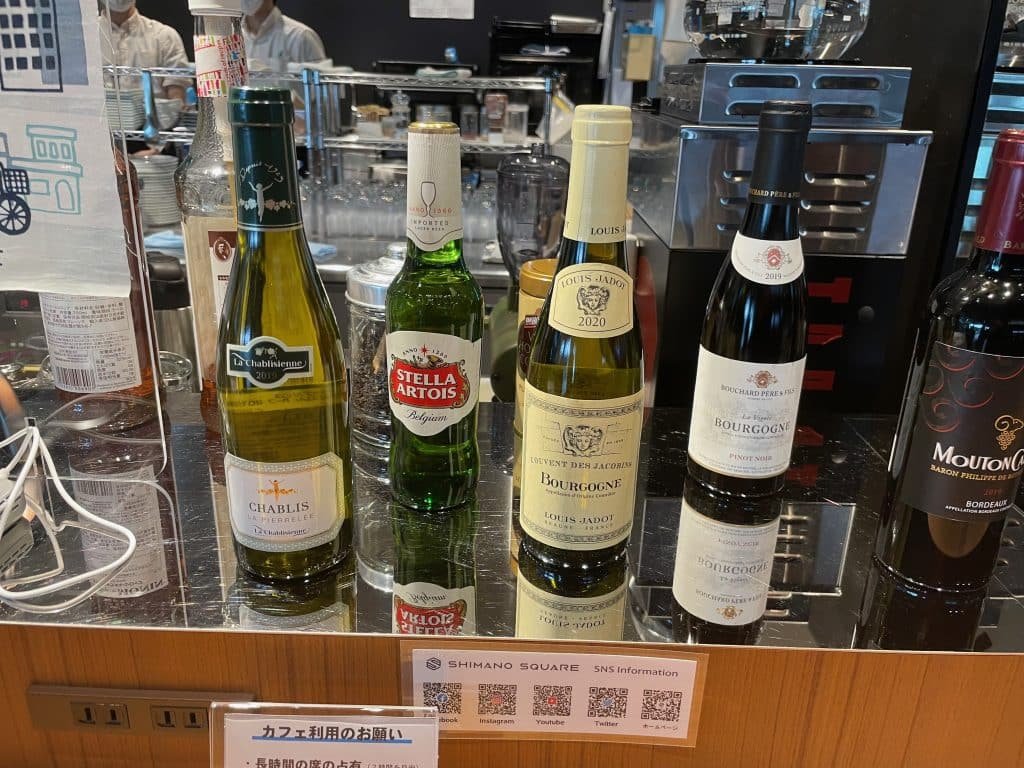

























Great article Matt! Very interesting and informative.